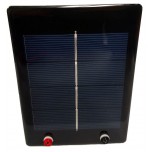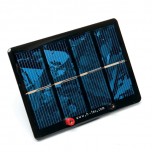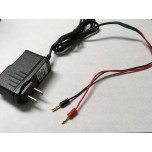Tutorial HyRunner Kit
The Tutorial HyRunner Kit by H-TEC helps you explore the innovative world of hydrogen powered vehicle / car models. The kit is equipped with a Reversible PEM Fuel Cell to combine hydrogen and oxygen and produce electrical energy to power the motor. The hydrogen is supplied from a solar hydrogen gas station where the reversible fuel cell is run in electrolysis mode (in combination with the Solar Panel and De-ionized water) and splits water into hydrogen and oxygen. The gases are than stored for use in the storage cylinders where they are later transferred to the car and supplied back in to the reversible fuel cell so it can be ran in fuel cell mode to power the car!
(1) Electrolyzer Mode - Uses external voltage to produce Hydrogen and Oxygen
(2) H2/O2 Fuel Cell Mode - Uses pure Hydrogen and Oxygen to produce electricity
(3) H2/Air Fuel Cell Mode - Uses pure Hydrogen and Atmospheric Oxygen (also known as air) to produce electricity
The Reversible Fuel Cell (RFC) can work in either electrolysis or fuel cell mode. As an electrolyser, it uses an external voltage to break down water into hydrogen and oxygen. As a fuel cell, it produces electricity by using hydrogen and oxygen gas (or atmospheric oxygen, also known as air).
Recommended Grade Levels: 5 - 12
• Solar Module Tutorial (under sunlight): 9 minutes
• Reversible Fuel Cell Hydrogen / Oxygen / Air
• 2x Storage 30
• Solar Module Tutorial
• Vehicle Plate and accessories
• Fuel Cell Technology Book for Classroom Instruction
✔ Building a model hydrogen car
✔ Producing and storing hydrogen
✔ Determining characteristic curve of solar panel
✔ Hydrogen/oxygen or hydrogen/air operation
✔ Determining characteristic curve of electrolyser
✔ Determining electrolyser efficiency
✔ Learning about Faraday’s laws
✔ Determining characteristic curves of fuel cell
✔ Determining fuel cell efficiency
✔ Determining decomposition voltage of water
For the blue experiments listed above you will also need the Measurement Set (product code: 1071077).
 |
Reversible Fuel Cell H2/O2/Air
Reversible fuel cell for hydrogen/oxygen operation and hydrogen/air operation.
• Hydrogen Production in Electrolyser Mode: 5 cm³/min at 1.16 WH
• Oxygen Production in Electrolyser Mode: 2.5 cm³/min at 1.16 WH
• Power in Fuel Cell H2/O2 Mode: 300 mW
• Power in Fuel Cell H2/Air Mode: 100 mW
• Dimensions (H x W x D): 2" x 1.6" x 2.2" (50 x 40 x 57 mm)
• Weight: 1.8 oz (52 g)
|
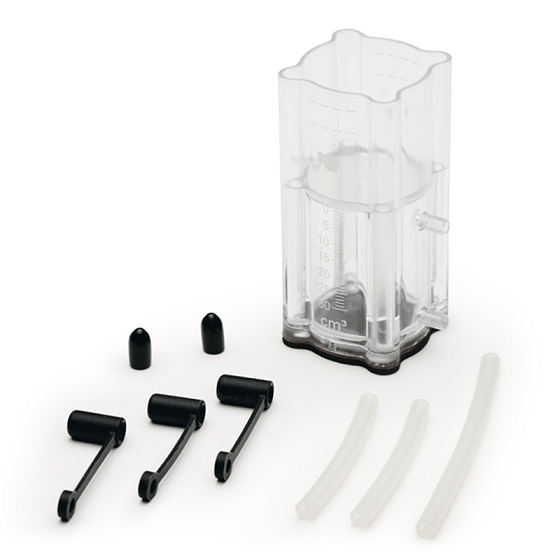 |
2x Storage 30
Gas storage tank for 30 cm³ hydrogen or oxygen gas. Including tube set.
• Storage Volume: 30 cm3
• Dimensions (H x W x D): 3.5" x 2.2" x 1.6" (90 x 55 x 40 mm)
• Weight: 1.7 oz (48 g)
|
 |
Solar module with magnetic base, which allows three different inclination angles.
• Power: 2.0 V / 600 mA
• Dimensions (H x W x D): 5.3" x 3.7" x 1.2" (135 x 95 x 30 mm)
• Weight: 3.1 oz (89 g)
• Connections: 2 mm banana sockets
|
 |
Vehicle Plate
Metallic vehicle chassis with electric motor.
• Power: 150 mW
• Dimensions (H x W x D): 2" x 4.5" x 10.2" (50 x 115 x 260 mm) • Weight: 8.9 oz (252 g) |
 |
Fuel Cell Technology for Classroom Instruction (A138)
H-TEC's fuel cell book, Fuel Cell Technology for Classroom Instruction provides a comprehensive introduction to solar hydrogen and fuel cell technology. Examples of experiments using solar cells, electrolysis and fuel cells convey the knowledge for forthcoming tests in an understandable manner.
All handouts and teaching aids can be used as work sheets by copying or downloading them from the internet.
|
 |
Entire Kit in Box
• Dimensions (H x W x D): 3.9" x 4.5" x 10.2" (100 x 115 x 260 mm)
• Weight: 2.9 pounds (1.3 kg) |
Write a review
Your Name:
Your Review: Note: HTML is not translated!
Rating: Bad Good
Enter the code in the box below:





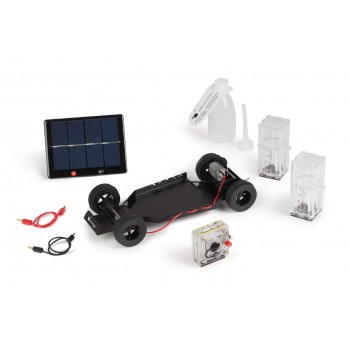






 H-TEC Education T207 Tutorial HyRunner Manual
H-TEC Education T207 Tutorial HyRunner Manual

